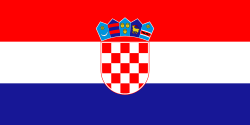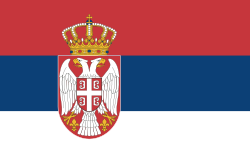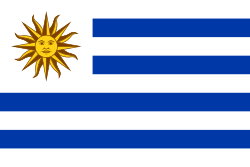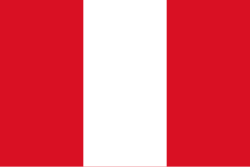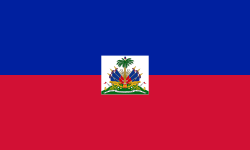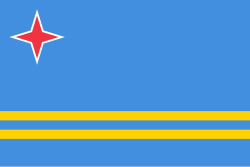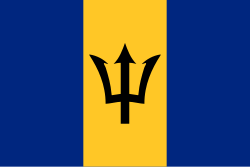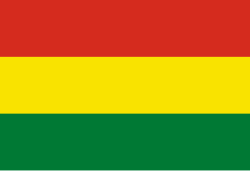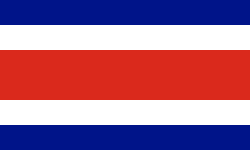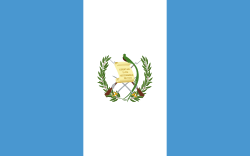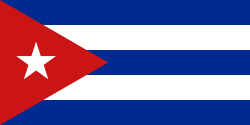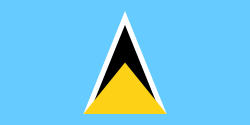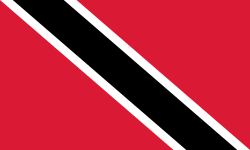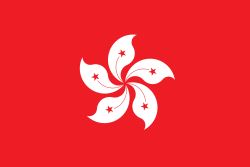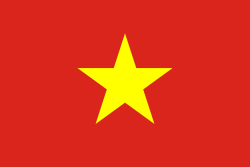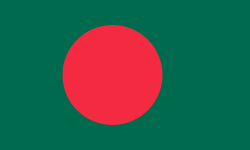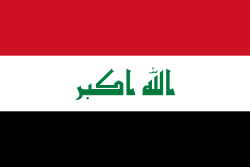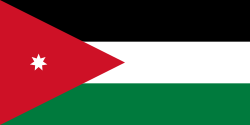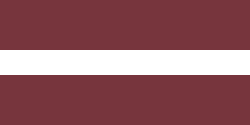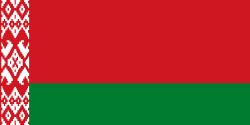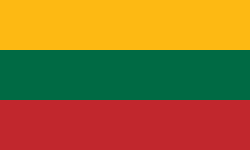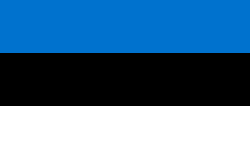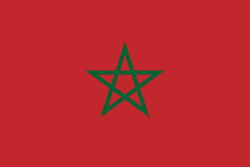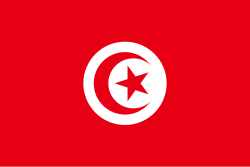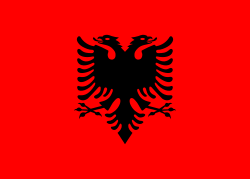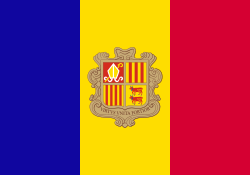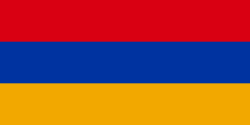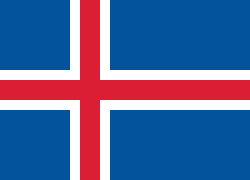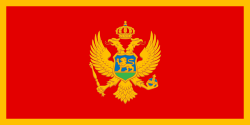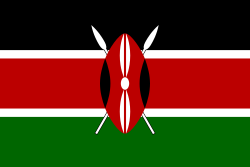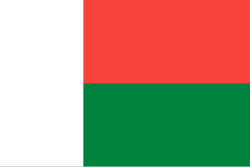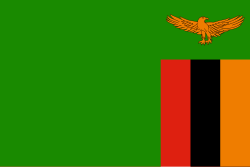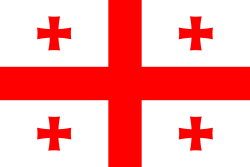Davis Cup 2011
Davis Cup 2011, oficiálně se jménem sponzora Davis Cup by BNP Paribas 2011, byl jubilejní 100. ročník nejdůležitější týmové soutěže mužů v tenise, která odstartovala prvním kolem 4. – 6. března a skončila finálovým zápasem 2. – 4. prosince ve španělské Seville.
Los se uskutečnil v září 2010 v belgickém hlavním městě Bruselu.[1]
Vítězem se stalo Španělsko, které ve finále na sevillské antuce zdolalo Argentinu 3–1. Jednalo se o stejné finalisty jako v roce 2008.
Světová skupina
Účastníci
Nasazené týmy
Pavouk
| První kolo 4.–6. března | Čtvrtfinále 8.–10. července | Semifinále 16.–18. září | Finále 2.–4. prosince | |||||||||||||||
| Novi Sad, Srbsko (hala, tvrdý) | ||||||||||||||||||
| 1 | | 4 | ||||||||||||||||
| Halmstad, Švédsko (tvrdý) | ||||||||||||||||||
| | 1 | |||||||||||||||||
| 1 | | 4 | ||||||||||||||||
| Boras, Švédsko (hala, tvrdý) | ||||||||||||||||||
| | 1 | |||||||||||||||||
| 7 | | 2 | ||||||||||||||||
| Bělehrad, Srbsko (tvrdý, hala) | ||||||||||||||||||
| | 3 | |||||||||||||||||
| 1 | | 2 | ||||||||||||||||
| Ostrava, Česko (hala, tvrdý) | ||||||||||||||||||
| 5 | | 3 | ||||||||||||||||
| 4 | | 2 | ||||||||||||||||
| Buenos Aires, Argentina (antuka) 7–9.7. | ||||||||||||||||||
| | 3 | |||||||||||||||||
| | 0 | |||||||||||||||||
| Buenos Aires, Argentina (antuka) | ||||||||||||||||||
| 5 | | 5 | ||||||||||||||||
| 5 | | 4 | ||||||||||||||||
| Sevilla, Španělsko (antuka, hala) | ||||||||||||||||||
| | 1 | |||||||||||||||||
| 5 | | 1 | ||||||||||||||||
| Santiago, Chile (antuka) | ||||||||||||||||||
| 3 | | 3 | ||||||||||||||||
| | 1 | |||||||||||||||||
| Austin, USA (tvrdý) | ||||||||||||||||||
| 6 | | 4 | ||||||||||||||||
| 6 | | 1 | ||||||||||||||||
| Charleroi, Belgie (hala, tvrdý) | ||||||||||||||||||
| 3 | | 3 | ||||||||||||||||
| | 1 | |||||||||||||||||
| Córdoba, Španělsko (antuka) | ||||||||||||||||||
| 3 | | 4 | ||||||||||||||||
| 3 | | 4 | ||||||||||||||||
| Záhřeb, Chorvatsko (hala, tvrdý) | ||||||||||||||||||
| 2 | | 1 | ||||||||||||||||
| | 3 | |||||||||||||||||
| Stuttgart, Německo (antuka) | ||||||||||||||||||
| 8 | | 2 | ||||||||||||||||
| | 1 | |||||||||||||||||
| Vídeň, Rakousko (hala, antuka) | ||||||||||||||||||
| 2 | | 4 | ||||||||||||||||
| | 2 | |||||||||||||||||
| 2 | | 3 | ||||||||||||||||
Play-off o účast ve Světové skupině
Osm týmů, které prohrály v 1. kole Světové skupiny hrálo 16.–18. září 2011 o udržení s osmi vítězi druhého kola jednotlivých 1. skupin zón. Vítězové si zajistili účast ve Světové skupině Davisova poháru 2012.
| Místo konání (povrch) | Domácí | Výsledek | Hosté |
|---|---|---|---|
| Tokio, Japonsko (tvrdý) | 4–1 | ||
| Kazaň, Rusko (tvrdý, hala) | 3–2 | ||
| Bukurešť, Rumunsko (antuka) | 0–5 | ||
| Ramat ha-Šaron, Izrael (tvrdý) | 2–3 | ||
| Santiago de Chile, Chile (tvrdý) | 1–4 | ||
| Antverpy, Belgie (tvrdý, hala) | 1–4 | ||
| Potchefstroom, Jihoafrická republika (tvrdý) | 1–4 | ||
| Sydney, Austrálie (tráva) | 2–3 |
Americká zóna
1. skupina
Nasazené týmy:
Nenasazené týmy:
Pavouk
| 2. kolo baráže | 1. kolo baráže | 1. kolo 4. – 6. března | 2. kolo 8. – 10. července | |||||||||||||||||
| 1 | | |||||||||||||||||||
| Guayaquil, Ekvádor (antuka) | volný los | Guayaquil, Ekvádor (antuka) | ||||||||||||||||||
| 1 | | 3 | 1 | | 2 | |||||||||||||||
| | 2 | Asunción, Mexiko (antuka) | | 3 | ||||||||||||||||
| | 1 | |||||||||||||||||||
| Mexico City, Mexiko (antuka) | | 4 | ||||||||||||||||||
| | 0 | |||||||||||||||||||
| | 5 | Montevideo, Uruguay (antuka) | ||||||||||||||||||
| | 4 | |||||||||||||||||||
| | 1 | Montevideo, Uruguay (antuka) | ||||||||||||||||||
| | | 0 | ||||||||||||||||||
| volný los | 2 | | 5 | |||||||||||||||||
| volný los | ||||||||||||||||||||
| 2 | | |||||||||||||||||||
| 2. skupiny v roce 2012. | postoupily do baráže Světové skupiny. | |||||||||||||||||||
2. skupina
Nasazené týmy:
Nenasazené týmy:
Pavouk
| Baráž 8. – 10. července | 1. kolo 4. – 6. března | 2. kolo 8. – 10. července | 3. kolo 16. – 18. září | |||||||||||||||||
| Lima, Peru (antuka) | ||||||||||||||||||||
| 1 | | 5 | ||||||||||||||||||
| Santa Tecla, Salvador (antuka) | | 0 | Lima, Peru (antuka) | |||||||||||||||||
| | 2 | 1 | | 3 | ||||||||||||||||
| | 3 | Santa Tecla, Salvador (antuka) | 3 | | 1 | |||||||||||||||
| 3 | | 5 | ||||||||||||||||||
| | 0 | Asunción, Paraguay (antuka) | ||||||||||||||||||
| 1 | | 3 | ||||||||||||||||||
| Mayagüez, Portoriko (tvrdý) | 4 | | 1 | |||||||||||||||||
| | 1 | |||||||||||||||||||
| Mayagüez, Portoriko (tvrdý) | 4 | | 4 | Asunción, Paraguay (antuka) | ||||||||||||||||
| | 4 | 4 | | 3 | ||||||||||||||||
| | 1 | Caracas, Venezuela (tvrdý) | 2 | | 1 | |||||||||||||||
| | 2 | |||||||||||||||||||
| 2 | | 3 | ||||||||||||||||||
| sestoupily do 3. skupiny v roce 2012. | do 1. skupiny v roce 2012. | |||||||||||||||||||
3. skupina
 Aruba
Aruba Bahamy
Bahamy Barbados
Barbados Bolívie
Bolívie Kostarika
Kostarika Guatemala
Guatemala Honduras
Honduras Jamajka
Jamajka
4. skupina
Zóna Asie a Oceánie
1. skupina
Nasazené týmy:
 Austrálie
Austrálie Uzbekistán
Uzbekistán
Nenasazené týmy:
 Čína
Čína Tchaj-wan
Tchaj-wan Japonsko
Japonsko Nový Zéland
Nový Zéland Filipíny
Filipíny
Pavouk
| 2. kolo baráže | 1. kolo baráže | 1. kolo 4. – 6. března | 2. kolo 8. – 10. července | |||||||||||||||||
| 1 | | |||||||||||||||||||
| volný los | Peking, ČLR (tvrdý, hala) | |||||||||||||||||||
| volný los | 1 | | 3 | |||||||||||||||||
| | Šanghaj, ČLR (tvrdý, hala) | | 1 | |||||||||||||||||
| | 2 | |||||||||||||||||||
| | 3 | |||||||||||||||||||
| | 3 | |||||||||||||||||||
| | 2 | Lapu-Lapu, Filipíny (antuka) | ||||||||||||||||||
| | 1 | |||||||||||||||||||
| Hawera, Nový Zéland (tvrdý, hala) | | 3 | Kóbe, Japonsko (tvrdý, hala) | |||||||||||||||||
| | 0 | | 4 | |||||||||||||||||
| | 5 | Namangan, Uzbekistán (antuka, hala) | 2 | | 1 | |||||||||||||||
| | 2 | |||||||||||||||||||
| 2 | | 3 | ||||||||||||||||||
| 2. skupiny v roce 2012. | postoupily do baráže Světové skupiny. | |||||||||||||||||||
2. skupina
Nasazené týmy:
Nenasazené týmy:
Pavouk
| Baráž 8. – 10. července | 1. kolo 4. – 6. března | 2. kolo 8. – 10. července | 3. kolo 16. – 18. září | |||||||||||||||||
| Changwon, Jižní Korea (tvrdý) | ||||||||||||||||||||
| 1 | | 4 | ||||||||||||||||||
| Victoria Park, Hongkong (tvrdý) | | 1 | Gimcheon, Jižní Korea (tvrdý) | |||||||||||||||||
| | 1 | 1 | | 4 | ||||||||||||||||
| | 4 | Causeway Bay, Hongkong (tvrdý) | 4 | | 0 | |||||||||||||||
| 4 | | 3 | ||||||||||||||||||
| | 2 | Gimcheon, Jižní Korea (tvrdý) | ||||||||||||||||||
| 1 | | 3 | ||||||||||||||||||
| Teherán, Írán (antuka, hala) | 2 | | 0 | |||||||||||||||||
| | 2 | |||||||||||||||||||
| Guam (tvrdý) | 3 | | 3 | Nonthaburi, Thajsko (tvrdý) | ||||||||||||||||
| | 1 | 3 | | 1 | ||||||||||||||||
| | 4 | Guam (tvrdý) | 2 | | 4 | |||||||||||||||
| | 0 | |||||||||||||||||||
| 2 | | 5 | ||||||||||||||||||
| sestoupily do 3. skupiny v roce 2012. | do 1. skupiny v roce 2012. | |||||||||||||||||||
3. skupina
4. skupina
Zóna Evropy a Afriky
1. skupina
Nasazené týmy:
Nenasazené týmy:
 Finsko
Finsko Nizozemsko
Nizozemsko Polsko
Polsko Portugalsko
Portugalsko Slovensko
Slovensko Slovinsko
Slovinsko Ukrajina
Ukrajina
Pavouk
| 2. kolo baráže | 1. kolo baráže | 1. kolo 4. – 6. března | 2. kolo 8. – 10. července | |||||||||||||||||
| 1 | | |||||||||||||||||||
| volný los | 4. – 6. března Ramat HaŠaron, Izrael (tvrdý) | |||||||||||||||||||
| volný los | 1 | | 3 | |||||||||||||||||
| | | 2 | ||||||||||||||||||
| volný los | ||||||||||||||||||||
| Espoo, Finsko (tvrdý, hala) | | |||||||||||||||||||
| | 2 | |||||||||||||||||||
| | 3 | |||||||||||||||||||
| 3 | | |||||||||||||||||||
| volný los | Arzachena, Itálie (antuka) | |||||||||||||||||||
| volný los | 3 | | 5 | |||||||||||||||||
| | Ljubljana, Slovinsko (antuka, hala) | | 0 | |||||||||||||||||
| | 2 | |||||||||||||||||||
| | 3 | |||||||||||||||||||
| Charkov, Ukrajina (tvrdý, hala) | ||||||||||||||||||||
| | 2 | |||||||||||||||||||
| | 3 | Potchefstroom, JAR (tvrdý) | ||||||||||||||||||
| | | 1 | ||||||||||||||||||
| volný los | 4 | | 3 | |||||||||||||||||
| volný los | ||||||||||||||||||||
| 4 | | |||||||||||||||||||
| | 1 | |||||||||||||||||||
| | 4 | Cruz Quebrada, Portugalako (antuka) | ||||||||||||||||||
| | 4 | |||||||||||||||||||
| | 1 | Bern, Švýcarsko (tvrdý, hala) | ||||||||||||||||||
| | | 0 | ||||||||||||||||||
| volný los | 2 | | 5 | |||||||||||||||||
| volný los | ||||||||||||||||||||
| 2 | | |||||||||||||||||||
| sestoupily do 2. skupiny v roce 2012. | postoupily do baráže Světové skupiny. | |||||||||||||||||||
2. skupina
Nasazené týmy:
 Velká Británie
Velká Británie Lotyšsko
Lotyšsko Bělorusko
Bělorusko Litva
Litva Kypr
Kypr Bosna a Hercegovina
Bosna a Hercegovina Monako
Monako Irsko
Irsko
Nenasazené týmy:
Pavouk
| Baráž 8. – 10. července | 1. kolo 4. – 6. března | 2. kolo 8. – 10. července | 3. kolo 16. – 18. září | |||||||||||||||||
| Bolton, Spojené království (hala, tvrdý) | ||||||||||||||||||||
| 1 | | 4 | ||||||||||||||||||
| Dublin, Irsko (hala, tvrdý) | | 1 | Glasgow, Spojené království (hala, tvrdý) | |||||||||||||||||
| | 2 | 1 | | 4 | ||||||||||||||||
| 8 | | 3 | Dublin, Irsko (hala, tvrdý) | | 1 | |||||||||||||||
| 8 | | 2 | ||||||||||||||||||
| | 3 | Glasgow, Spojené království (hala, tvrdý) | ||||||||||||||||||
| 1 | | 5 | ||||||||||||||||||
| Minsk, Bělorusko (hala, tvrdý) | | 0 | ||||||||||||||||||
| 3 | | 4 | ||||||||||||||||||
| Sofie, Bulharsko (hala, tvrdý) | | 1 | Gödöllő, Maďarsko (antuka) | |||||||||||||||||
| | 2 | 3 | | 2 | ||||||||||||||||
| 5 | | 3 | Nicosia, Kypr (tvrdý) | | 3 | |||||||||||||||
| 5 | | 0 | ||||||||||||||||||
| | 5 | |||||||||||||||||||
| Marrakéš, Maroko (antuka) | ||||||||||||||||||||
| | 2 | |||||||||||||||||||
| Vilnius, Litva (antuka) | 6 | | 3 | Tuzla, Bosna a Hercegovina (hala, tvrdý) | ||||||||||||||||
| | 5 | 6 | | 3 | ||||||||||||||||
| 4 | | 0 | Tallinn, Estonsko (hala, tvrdý) | | 2 | |||||||||||||||
| | 3 | |||||||||||||||||||
| 4 | | 2 | Hillerød, Dánsko (hala, tvrdý) | |||||||||||||||||
| 6 | | 2 | ||||||||||||||||||
| Kolding, Dánsko (hala, koberec) | | 3 | ||||||||||||||||||
| | 3 | |||||||||||||||||||
| Thessaloniki, Řecko (antuka) | 7 | | 2 | Frederiksberg, Dánsko (antuka) | ||||||||||||||||
| 7 | | 3 | | 3 | ||||||||||||||||
| | 2 | Thessaloniki, Řecko (antuka) | 2 | | 2 | |||||||||||||||
| | 1 | |||||||||||||||||||
| 2 | | 4 | ||||||||||||||||||
| sestoupily do 3. skupiny v roce 2012. | postoupily do 1. skupiny v roce 2012. | |||||||||||||||||||
3. skupina Evropa
3. skupina Afrika
 Alžírsko
Alžírsko Benin
Benin Kamerun
Kamerun Kongo
Kongo Pobřeží slonoviny
Pobřeží slonoviny Egypt
Egypt Ghana
Ghana Keňa
Keňa Madagaskar
Madagaskar Maroko
Maroko Nigérie
Nigérie Rwanda
Rwanda Zambie
Zambie Zimbabwe
Zimbabwe
Odkazy
Reference
V tomto článku byl použit překlad textu z článku 2011 Davis Cup na anglické Wikipedii.
- ↑ Draw made for 2011 Davis Cup. www.daviscup.com. daviscup.com, 21-9-2010. Dostupné online [cit. 5-12-2010]. (anglicky)
Externí odkazy
 Obrázky, zvuky či videa k tématu Davis Cup 2011 na Wikimedia Commons
Obrázky, zvuky či videa k tématu Davis Cup 2011 na Wikimedia Commons - (anglicky)Davis Cup – oficiální stránky
Média použitá na této stránce
This is the national flag of Belgium, according to the Official Guide to Belgian Protocol. It has a 13:15 aspect ratio, though it is rarely seen in this ratio.
Its colours are defined as Pantone black, Pantone yellow 115, and Pantone red 032; also given as CMYK 0,0,0,100; 0,8.5,79,0; and 0,94,87,0.Při zobrazení tohoto souboru lze snadno přidat orámování
Při zobrazení tohoto souboru lze snadno přidat orámování
Vlajka České republiky. Podoba státní vlajky České republiky je definována zákonem České národní rady č. 3/1993 Sb., o státních symbolech České republiky, přijatým 17. prosince 1992 a který nabyl účinnosti 1. ledna 1993, kdy rozdělením České a Slovenské Federativní republiky vznikla samostatná Česká republika. Vlajka je popsána v § 4 takto: „Státní vlajka České republiky se skládá z horního pruhu bílého a dolního pruhu červeného, mezi něž je vsunut žerďový modrý klín do poloviny délky vlajky. Poměr šířky k její délce je 2 : 3.“
Flag of Canada introduced in 1965, using Pantone colors. This design replaced the Canadian Red Ensign design.
Used color: National flag | South African Government and Pantone Color Picker
| zelená | rendered as RGB 0 119 73 | Pantone 3415 C |
| žlutá | rendered as RGB 255 184 28 | Pantone 1235 C |
| červená | rendered as RGB 224 60 49 | Pantone 179 C |
| modrá | rendered as RGB 0 20 137 | Pantone Reflex Blue C |
| bílá | rendered as RGB 255 255 255 | |
| černá | rendered as RGB 0 0 0 |
The flag of the Dominican Republic has a centered white cross that extends to the edges. This emblem is similar to the flag design and shows a bible, a cross of gold and 6 Dominican flags. There are branches of olive and palm around the shield and above on the ribbon is the motto "Dios,Patria!, Libertad" ("God, Country, Freedom") and to amiable freedom. The blue is said to stand for liberty, red for the fire and blood of the independence struggle and the white cross symbolized that God has not forgotten his people. "Republica Dominicana". The Dominican flag was designed by Juan Pablo Duarte, father of the national Independence of Dominican Republic. The first dominican flag was sewn by a young lady named Concepción Bona, who lived across the street of El Baluarte, monument where the patriots gathered to fight for the independence, the night of February 27th, 1844. Concepción Bona was helped by her first cousin María de Jesús Pina.
The flag of the Dominican Republic has a centered white cross that extends to the edges. This emblem is similar to the flag design and shows a bible, a cross of gold and 6 Dominican flags. There are branches of olive and palm around the shield and above on the ribbon is the motto "Dios,Patria!, Libertad" ("God, Country, Freedom") and to amiable freedom. The blue is said to stand for liberty, red for the fire and blood of the independence struggle and the white cross symbolized that God has not forgotten his people. "Republica Dominicana". The Dominican flag was designed by Juan Pablo Duarte, father of the national Independence of Dominican Republic. The first dominican flag was sewn by a young lady named Concepción Bona, who lived across the street of El Baluarte, monument where the patriots gathered to fight for the independence, the night of February 27th, 1844. Concepción Bona was helped by her first cousin María de Jesús Pina.
The national and official state flag of Haiti; arms obtained from File:Coat of arms of Haiti.svg. The civil flag can be found at here.
The flag of Aruba
| Flag of Bolivia* | |
|---|---|
| country | Template:I18n/Republic of Bolivia |
| used by | Bolivia |
| from | 1851 |
| until | Present |
| created by | Government of Bolivia |
| format | 15:22 |
| shape | rectangular |
| colours | červená, žlutá, zelená
flag has 3 horizontal stripes |
| other characteristics | A horizontal tricolor of red, yellow and green. |
Flag of Jamaica. “The sunshine, the land is green, and the people are strong and bold” is the symbolism of the colours of the flag. GOLD represents the natural wealth and beauty of sunlight; GREEN represents hope and agricultural resources; BLACK represents the strength and creativity of the people. The original symbolism, however, was "Hardships there are, but the land is green, and the sun shineth", where BLACK represented the hardships being faced.
Chinese Taipei Olympic Flag. According to the official website of Chinese Taipei Olympic Committee, Blue Sky(circle) & White Sun(triangles) above the Olympic rings is neither the National Emblem of the Republic of China, nor the Party Emblem of Kuomintang (KMT), but a design in between, where the triangles do not extend to the edge of the blue circle, as registered at International Olympic Committee in 1981 and digitally rendered in 2013. Besides, the blue outline of the five-petaled plum blossom is broader than the red one. Moreover, the CMYK code of the blue one and the Blue Sky & White Sun is "C100-M100-Y0-K0", and different from the Olympic rings (C100-M25-Y0-K0). Note that it's the only version recognized by IOC.
Chinese Taipei Olympic Flag. According to the official website of Chinese Taipei Olympic Committee, Blue Sky(circle) & White Sun(triangles) above the Olympic rings is neither the National Emblem of the Republic of China, nor the Party Emblem of Kuomintang (KMT), but a design in between, where the triangles do not extend to the edge of the blue circle, as registered at International Olympic Committee in 1981 and digitally rendered in 2013. Besides, the blue outline of the five-petaled plum blossom is broader than the red one. Moreover, the CMYK code of the blue one and the Blue Sky & White Sun is "C100-M100-Y0-K0", and different from the Olympic rings (C100-M25-Y0-K0). Note that it's the only version recognized by IOC.
The national flag of Kingdom of Thailand; there are total of 3 colours:
- Red represents the blood spilt to protect Thailand’s independence and often more simply described as representing the nation.
- White represents the religion of Buddhism, the predominant religion of the nation
- Blue represents the monarchy of the nation, which is recognised as the centre of Thai hearts.
bendera Indonesia
Flag of Iran. The tricolor flag was introduced in 1906, but after the Islamic Revolution of 1979 the Arabic words 'Allahu akbar' ('God is great'), written in the Kufic script of the Qur'an and repeated 22 times, were added to the red and green strips where they border the white central strip and in the middle is the emblem of Iran (which is a stylized Persian alphabet of the Arabic word Allah ("God")).
The official ISIRI standard (translation at FotW) gives two slightly different methods of construction for the flag: a compass-and-straightedge construction used for File:Flag of Iran (official).svg, and a "simplified" construction sheet with rational numbers used for this file.
Finská vlajka
Flag of Portugal, created by Columbano Bordalo Pinheiro (1857–1929), officially adopted by Portuguese government in June 30th 1911 (in use since about November 1910). Color shades matching the RGB values officially reccomended here. (PMS values should be used for direct ink or textile; CMYK for 4-color offset printing on paper; this is an image for screen display, RGB should be used.)
Zelený pruh má znázorňovat většinové katolické obyvatelsto Irska, oranžový pruh reprezentuje protestantskou menšinu a bílý pruh uprostřed znázorňuje mír a harmonii mezi nimi.
The Flag of Iceland.
- Horizontal aspect ratio: 7:1:2:1:14;
- Vertical aspect ratio: 7:1:2:1:7.
Flag of the Ivory Coast, written by Jon Harald Søby, modified by Zscout370. The colors match to what is reported at http://fotw.vexillum.com/flags/ci.html.
Flag of Rwanda. The flag ratio is 2:3 with the stripes being 2:1:1. Colors are the following officially: Pantone 299 C 2X (blue), RAL 6029 (green), RAL 1023 (yellow) and RAL 1003 (golden yellow). (As of 03/08/2010, the only color used is the Pantone 299 C, which is from here. The rest of the colors are RAL shades from here.)
Při zobrazení tohoto souboru lze snadno přidat orámování




